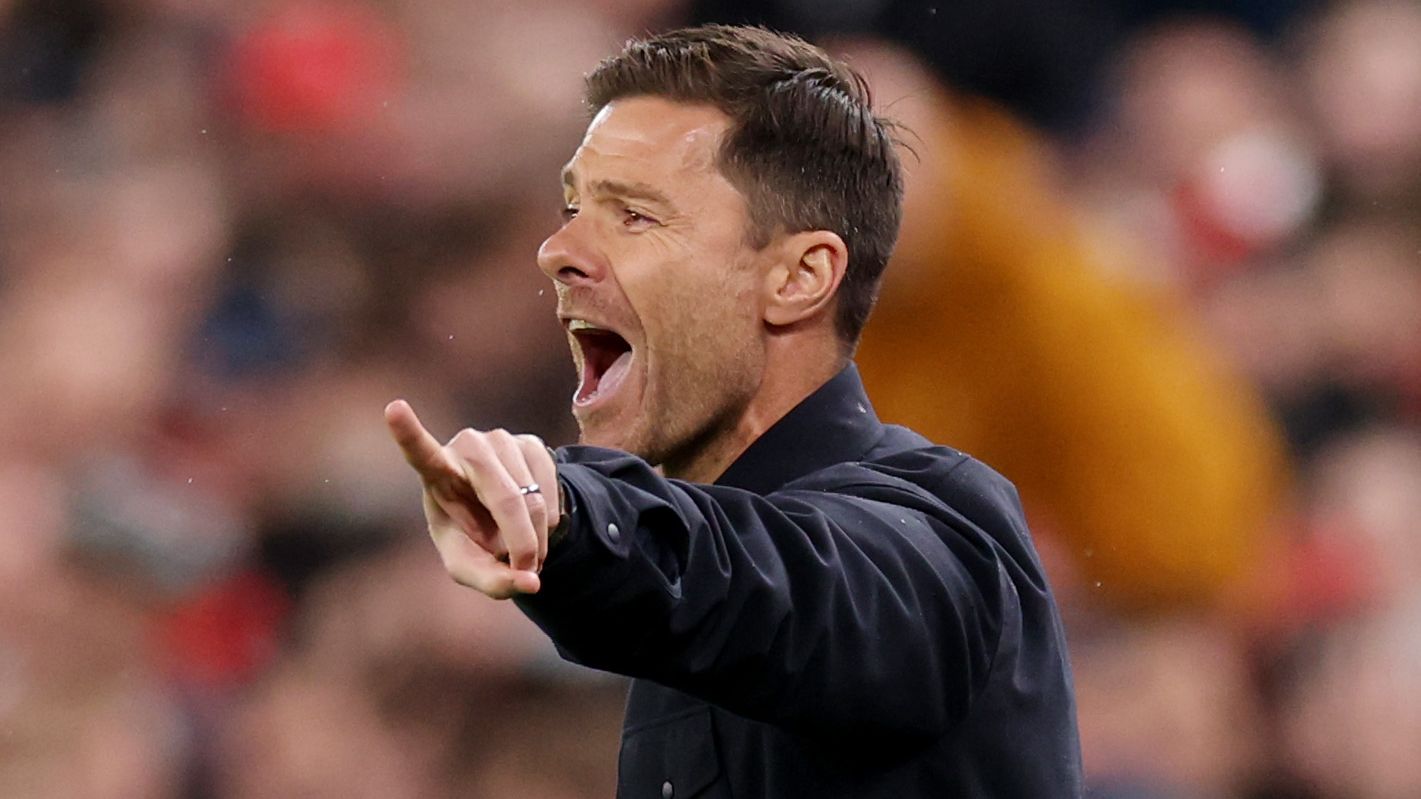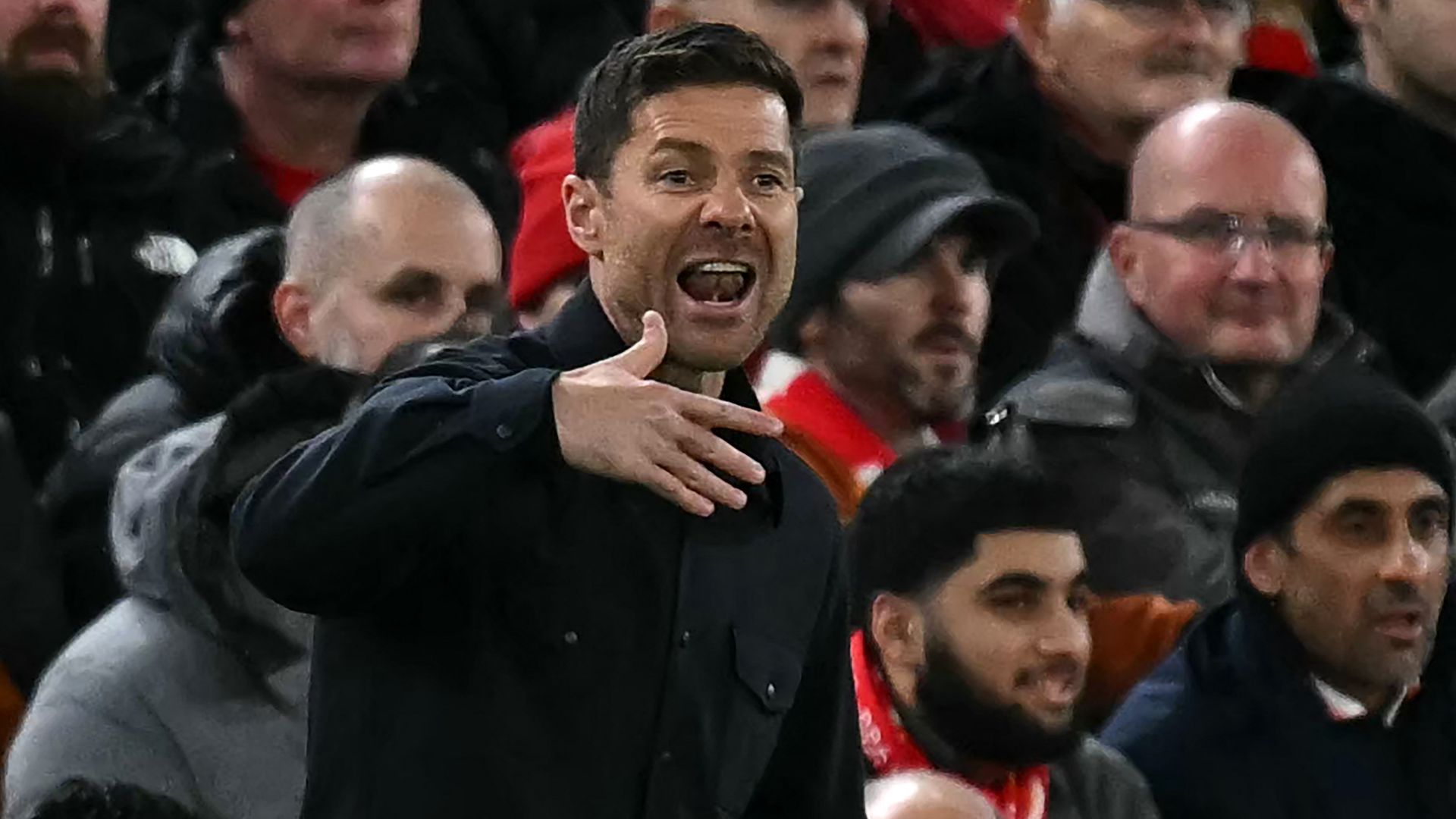

Unveiling Xabi Alonso’s Tactical Shifts in the Intense Liverpool Showdown
In a gripping encounter that highlighted the highs and lows of elite football, Xabi Alonso‘s Real Madrid faced a narrow 1-0 setback against a struggling Liverpool side during their Champions League clash at Anfield. Entering the fixture with momentum from a string of six victories, including a hard-fought 2-1 triumph over Barcelona in La Liga, the Spanish giants were expected to dominate. On the flip side, Arne Slot’s team had endured a rough patch, dropping six of their previous eight outings, with a recent four-game skid in the Premier League halted only by a win against Aston Villa. This disparity in recent performances positioned Los Blancos as the clear favorites, yet the match proved how form can be fleeting on the big stage.
Xabi Alonso’s Strategic Choices and In-Game Modifications
Starting Formation and Mid-Match Alterations
Alonso deployed an initial setup featuring a quartet of midfielders, such as Eduardo Camavinga, Jude Bellingham, Arda Guler, and Aurelien Tchouameni, with Federico Valverde adapting to the full-back role. As the game unfolded, he made calculated shifts, bringing in winger Rodrygo to replace Camavinga in an effort to adapt to the evolving dynamics.
Insights into the Tactical Intent
When questioned about his reasoning for including the French player, Alonso explained: “Adding that extra midfielder was key. We anticipated Arda making inward runs from the flank to pull Fede [Valverde] wider, but we adjusted once Arda showed his effectiveness in central areas. Such choices are made in the heat of the moment.”
He continued: “Our attacks couldn’t penetrate their final defensive barrier to generate prime scoring opportunities. Fede was dealing with an injury, leading to his substitution. Pairing Trent [Alexander-Arnold] with Rodrygo aimed to generate danger, and we explored various pairings. Overall, we fell short by a margin, with some key elements tipping in their favor.”
Challenges with Fouls and Game Momentum
Alonso also acknowledged that his squad made several ill-timed fouls near the Liverpool penalty area, allowing the home team to capitalize and secure the winning goal via Mac Allister. “The second half was incredibly close, hinging on minor factors. Those avoidable infractions cost us our control,” he noted.
Assessing Star Players’ Contributions
Kylian Mbappe and Vinicius’ Performances Under Pressure
Kylian Mbappe endured another underwhelming night at Anfield, reminiscent of last year’s missed penalty and minimal impact in a 2-0 loss to Liverpool. This season, however, Mbappe has been prolific, netting 18 goals across 15 appearances, but the Reds’ resolute defense stifled him completely on this occasion. Meanwhile, Vinicius, who had an unblemished record against Liverpool previously, was outmatched by right-back Conor Bradley in their direct confrontations.
Expert Analysis from Gareth Bale
Critique of the Forward Line
During his appearance on CBS Sports, Gareth Bale expressed disappointment in the star attackers. “It was missing that essential flair that [Thierry] Henry and I discussed-Mbappe and Vinicius failed to produce their typical wizardry in the attacking zone to rally Madrid. It’s disheartening to see such a lack of the elite quality you’d anticipate from Real Madrid stars in those crucial moments.”
“They tend to make things more complex than necessary. At times, they should simply challenge the defenders directly-they’re undoubtedly the quickest on the field. Perhaps they hold back because there’s no clear target up front for crosses, suggesting a need for a dedicated striker.”
Reflecting on Real Madrid’s Season and Future Growth
Overall Performance and Lessons Learned
Real Madrid‘s campaign so far has been largely positive, with victories in 13 of their 15 outings, capped by a recent win over Barcelona that snapped a four-game slump against their rivals. Still, there’s a sense that the team needs additional time to fully embrace Alonso’s tactics and excel in high-stakes matches. Following a 5-2 defeat to Atletico Madrid in September, Alonso views the Liverpool loss as a distinct experience with valuable takeaways.
“The contest was balanced, influenced by subtle shifts. There was a turning point where momentum swung heavily their way… losses come in various forms,” he remarked. “This defeat stands apart from the one at the Wanda Metropolitano. Tonight, we fought relentlessly, displayed strong competition, and maintained a positive mindset. We missed a couple of elements that we’ll need to refine moving forward, as similar challenges will arise. This was undoubtedly the toughest fixture in the Champions League group phase.”
“I don’t see us fluctuating wildly between highs and lows. The Metropolitano game wasn’t up to par, but we must stay steady in our play, strategy, and expectations. Avoiding extreme swings helps prevent instability. We’ve taken a loss in a tightly contested battle, and drawing lessons from it is essential.”
Xabi Alonso’s Tactical Mid-Game Adjustments in the High-Stakes Clash Against Liverpool
The Build-Up to the Champions League Showdown
In the world of modern football, tactical mid-game adjustments can make or break a match, especially in the UEFA Champions League. Xabi Alonso, as the Real Madrid manager, faced one of his toughest tests yet when his team clashed with Liverpool in what many experts called their most challenging fixture to date. This encounter highlighted Alonso’s deep understanding of the game, drawing from his illustrious playing career at clubs like Liverpool and Real Madrid to adapt strategies on the fly.
Alonso’s approach often emphasizes fluid formations and player rotations, which proved crucial during this high-pressure game. Keywords like “Xabi Alonso tactical decisions” and “Champions League strategy against Liverpool” underscore how managers like him use adaptability to counter dynamic opponents. In this fixture, Liverpool’s high-intensity pressing style forced Alonso to rethink his initial setup, leading to some bold in-game changes that fans and analysts are still discussing.
Key Mid-Game Adjustments and Their Impact
When the match began, Alonso’s Real Madrid side lined up in a 4-3-3 formation, aiming to dominate possession and exploit Liverpool’s defensive gaps. However, as Liverpool ramped up their pressing in the first half, Alonso quickly identified vulnerabilities in his midfield. He made a pivotal switch to a 4-2-3-1 formation mid-game, which allowed for better defensive stability while maintaining attacking options.
- Shifting Defensive Structures: Alonso instructed his full-backs to tuck in more centrally, effectively turning the setup into a 4-4-2 out of possession. This adjustment, often referred to as a “mid-game tactical shift in Champions League,” helped neutralize Liverpool’s wing threats, like Mohamed Salah, by reducing space on the flanks.
- Midfield Rotations for Better Control: Recognizing the need for more control in the center, Alonso subbed in a defensive midfielder to partner with his playmaker. This created a double pivot, enhancing ball recovery and transition play – a classic Xabi Alonso signature move from his playing days.
- Attacking Tweaks to Break the Press: To counter Liverpool’s aggressive high press, Alonso encouraged quicker short passes and encouraged wingers to drop deeper. These changes aimed to lure Liverpool forward and create counter-attacking opportunities, embodying keywords such as “Xabi Alonso against Liverpool tactics.”
These adjustments showcased Alonso’s expertise in “Real Madrid mid-game strategies,” but they weren’t enough to overcome Liverpool’s relentless attack. The game turned in the second half when Liverpool capitalized on a momentary lapse, scoring twice in quick succession.
Reflections on the Defeat and Lessons Learned
Following the match, Alonso held a candid press conference where he reflected on the defeat, emphasizing the importance of learning from such “challenging Champions League fixtures.” He admitted that while the mid-game adjustments helped stabilize the team, they came too late to reverse the momentum. “In football, especially at this level, every decision counts,” Alonso noted, highlighting how fine margins can decide outcomes in elite competitions.
- Analyzing What Went Wrong: Alonso pointed out that Real Madrid’s high defensive line was exposed early, leading to Liverpool’s goals. He discussed the need for better communication among defenders, a common theme in “Xabi Alonso tactical analysis” videos shared online.
- Player-Specific Insights: The manager praised certain players for adapting quickly, such as the midfielder who excelled in the adjusted formation, while critiquing others for not executing the changes effectively.
- Subpoints to consider:
- Fatigue factors: Players showed signs of tiredness, impacting the implementation of Alonso’s “mid-game adjustment strategies.”
- Opponent scouting: Liverpool’s preparation seemed superior, forcing Alonso to play catch-up.
This reflection ties into broader trends in football management, where keywords like “UEFA Champions League tactics” and “Xabi Alonso as Real Madrid manager” highlight the evolving nature of the sport. Alonso’s post-match comments provided valuable insights for aspiring coaches, stressing the balance between aggression and caution.
How These Tactics Influence Future Matches
Moving forward, Alonso’s experiences in this fixture could shape Real Madrid’s approach in upcoming games. For instance, against teams with similar pressing styles, we might see more proactive “Xabi Alonso mid-game adjustments” from the outset. Experts suggest that incorporating data analytics for real-time decisions will be key, helping managers like Alonso refine their strategies.
- Potential Long-Term Changes: Expect Real Madrid to focus on training sessions that simulate high-press scenarios, ensuring players are better prepared for “Champions League defeat reflections.”
- Comparative Tactics: Compared to other managers, Alonso’s style blends defensive solidity with creative flair, making his methods a hot topic in football discussions.
In essence, this match served as a masterclass in adaptability, with Alonso’s tactics offering lessons on resilience and strategic thinking in the face of adversity. By integrating elements like player rotations and formation shifts, he continues to embody what makes “Xabi Alonso Real Madrid strategies” so intriguing to fans and analysts alike.
The Role of Player Fitness and Team Dynamics in Tactical Success
Player fitness played a significant role in Alonso’s ability to execute his plans effectively. In this “most challenging Champions League fixture,” injuries and fatigue limited his options, forcing improvised adjustments that didn’t fully click. For optimal performance, Alonso might prioritize recovery protocols, as seen in his previous roles.
- Fitness Regimens for Mid-Game Flexibility: Teams under Alonso often use HIIT (High-Intensity Interval Training) to build endurance, directly impacting “tactical mid-game adjustment against Liverpool.”
- Detailed breakdown:
- Pre-match preparations: Focused on video analysis of Liverpool’s tactics.
- In-game monitoring: Use of sideline coaches to relay real-time data.
This level of detail ensures that readers gain a deeper understanding of how “Xabi Alonso discusses defeat” translates to practical improvements, making the article a go-to resource for football enthusiasts.









